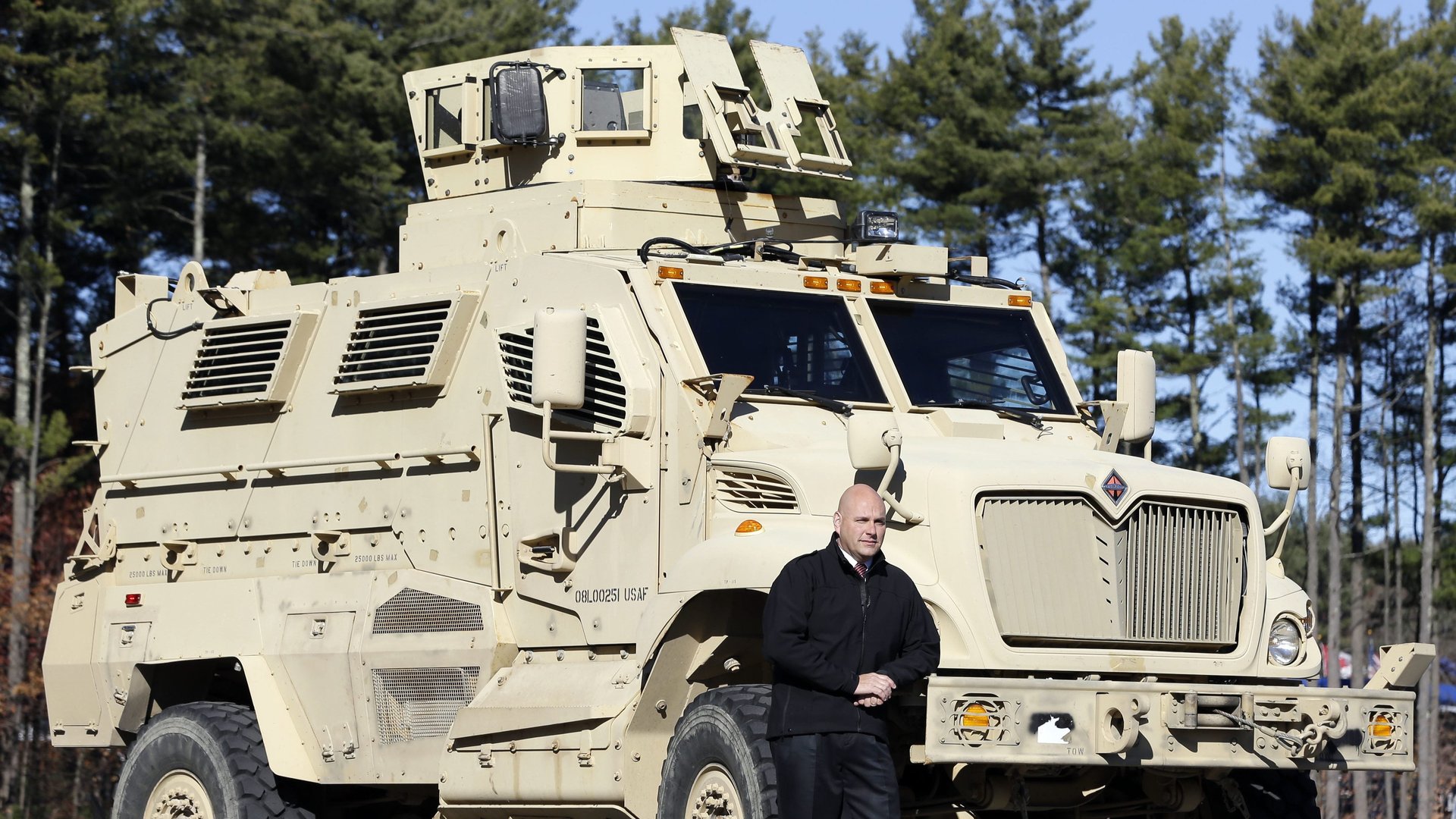Trump lifts an Obama-era ban that did little to stop the flow of military equipment to police
The Trump administration is lifting a ban on sending certain kinds of surplus military equipment to local US police departments. The move is in line with the “law-and-order” rhetoric embraced by the White House and Department of Justice.


The Trump administration is lifting a ban on sending certain kinds of surplus military equipment to local US police departments. The move is in line with the “law-and-order” rhetoric embraced by the White House and Department of Justice.
The limits had been imposed as a result of 2015 executive order from former president Barack Obama, in reaction to an uproar about police militarization after images from Ferguson, Missouri showed officers in armored vehicles, dressed in head-to-toe military gear. The ban was unpopular with law-enforcement groups that are key supporters of the Trump administration. Attorney General Jeff Sessions announced the new policy, first reported by USA Today, at a conference of the Fraternal Order of Police, the country’s largest police union today (Aug. 28).
“Those restrictions went too far,” Sessions said, according to prepared remarks, referring to the military equipment as “life-saving,” and necessary in crisis situations like flooding in Texas after Hurricane Harvey. “We will not put superficial concerns above public safety. All you need to do is turn on a TV right now to see that for Houstonians this isn’t about appearances, its about getting the job done and getting everyone to safety.”
The move, while decried by civil-rights groups, likely won’t change much about police militarization in America, because the ban didn’t mean all that much in the first place. Most types of military equipment would still be available to law enforcement agencies, and the ban applied to several that were never given out to begin with. Following the ban, according to the Defense Logistics Agency, the body responsible for overseeing the program, as of November, 126 armored personnel carriers were returned by law-enforcement agencies, as were 138 grenade launchers, and 1,623 bayonets. Overall, transfers under the program—which have totaled more than $5 billion since the 1990s—had not decreased since the events in Ferguson, according to a report from In These Times.
In a recent conversation with Quartz, Peter Kraska, a professor at Eastern Kentucky University’s School of Justice Studies and one of the top experts on US police militarization, called the Obama-era limits “symbolic,” emphasizing that the phenomenon was not primarily caused by the Department of Defense giving out military goods. Here’s what he said about its origins:
It really reached its height of formation and activity in the late 1980s and 1990s drug war. Yes, the military was a little bit involved, but mostly it was the result of a lot of federal money being pumped into policing for the war on drugs, as well as under the auspices of community policing. It became amped up after 9/11, when the Department of Homeland Security was formed. It gave a tremendous amount of money in funding for local police departments so they could buy armored personnel carrier vehicles and they could better outfit their SWAT teams.
Importantly, he added that any hope of reducing police militarization in the US was gone after the 2016 election:
I don’t think the trend line of police militarization is going to necessarily accelerate, but if there was any possibility of a pause in the trend post-Ferguson, it has certainly died with the Trump administration, because of the power of the rhetoric coming out of the White House.